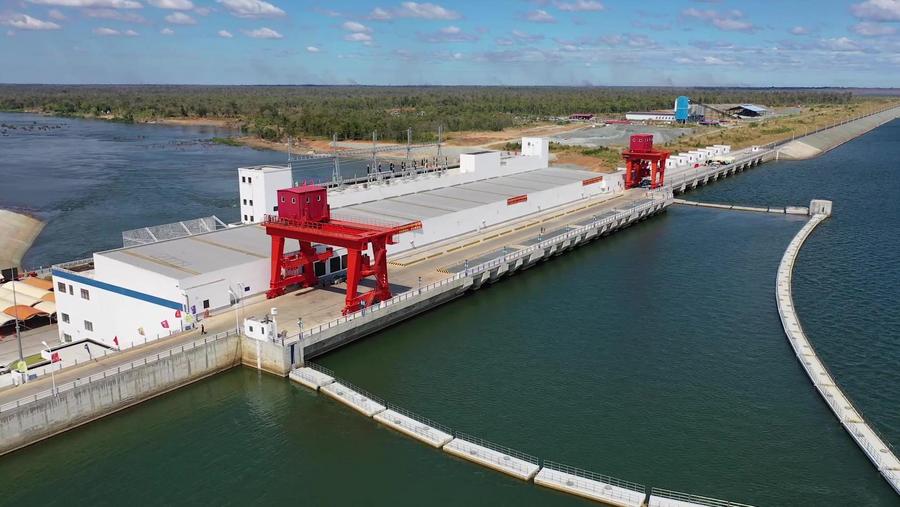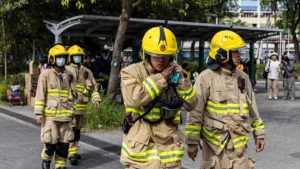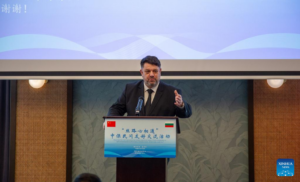China’s J-16 Fires at Aussie P-8; Beijing Justifies Action
In a startlingly familiar scenario, a J-16 fighter jet from the Chinese People’s Liberation Army Air Force (PLAAF) recently fired flares at an Australian P-8A reconnaissance plane over the disputed waters of the South China Sea. This occurrence has once more shone a spotlight on China’s alleged dominance in the region—a claim Beijing persistently refutes. According to the Australian Department of Defence, the incident unfolded on February 11, with the J-16 discharging flares within 30 meters of the Royal Australian Air Force (RAAF) P-8 Poseidon.
In a contentious encounter, two J-16 jets from the Chinese Air Force intercepted an Australian Air Force P-8 aircraft operating in international airspace over the South China Sea. “There were several interactions between those jets and the P-8,” Australian Defence Minister Richard Marles told ABC News. He pointed out that during one of these interactions, flares were deployed by the J-16s, passing dangerously close to the Australian aircraft, within approximately 30 meters. The Australian Defence Department has described the exchange as “unsafe and unprofessional.” Fortunately, no personnel were injured, and the P-8 aircraft was not harmed.
The Australian Defence Department has filed formal complaints with the People’s Liberation Army (PLA). In a statement, the Defence Department said, “The Australian government has raised its concerns with the Chinese government following an unsafe and unprofessional interaction with a People’s Liberation Army – Air Force (PLA-AF) aircraft.” The statement further emphasized, “Australia expects all countries, including China, to conduct their military operations safely and professionally.”
China has strongly responded, labelling the incident as a “deliberate intrusion” into its airspace. During a press conference, GuoJiakun, a spokesperson for China’s foreign ministry, stated that Australia had “jeopardized” China’s national security. He emphasized that the Chinese side took “proper, legal, and professional measures to exercise restraint.”
In a separate incident, three Chinese warships were reported near Australia. The Australian Defence Forces (ADF) identified two People’s Liberation Army-Navy (PLA-N) frigates and a replenishment vessel operating in the Coral Sea. “Defence is aware of a People’s Liberation Army-Navy (PLA-N) task group operating to the northeast of Australia,” the ADF confirmed. The Chinese vessels are identified as the Jiangkai-class frigate Hengyang, the Renhai cruiser Zunyi, and the Fuchi-class replenishment vessel Weishanhu.
The recent incident highlights the ongoing instability in the Indo-Pacific region. China asserts sovereignty over a significant portion of the South China Sea and is entangled in numerous territorial disputes with neighbouring Southeast Asian countries. The People’s Liberation Army (PLA) has established and militarized several artificial islands in this highly contested area. China is known for its risky interceptions of foreign military aircraft operating in the international airspace over the South and East China Seas. Additionally, it frequently condemns the presence of Western military forces in the region, labelling such activities as “provocative.”
China has increasingly utilized flares as a method to counter military aircraft from other nations. Though typically used as a countermeasure to confuse incoming missiles, flares can also potentially disrupt aircraft operations. These flares emit intense beams of light that can travel significant distances, temporarily blinding pilots by illuminating aircraft cockpits. Composed of a pyrotechnic mix, often based on magnesium or other hot-burning metals, flares can pose a physical risk to aircraft.
Months ago, a PLA Air Force J-10 jet dangerously released flares near a Royal Australian Navy SeaHawk helicopter on a UN mission. The helicopter, which took off from HMAS Hobart, encountered the J-10 in international waters over the Yellow Sea. Australian authorities lodged a protest with China following the incident. Defence Minister Richard Marles noted that the helicopter pilot had to take evasive actions to avoid the flares, stating the potential consequences would have been severe.
On May 26, 2022, a significant incident occurred mirroring the latest one. An RAAF P-8 aircraft on routine maritime surveillance was intercepted by a Chinese J-16 fighter jet in international airspace over the South China Sea. The J-16 flew dangerously close and released flares. In September 2024, Chinese state media released footage showing the J-16 jet firing flares and chaff into the P-8’s flight path, which were reportedly sucked into its engine, posing a serious safety risk to the aircraft and its crew.
In February 2022, Australia accused China of targeting its P-8 aircraft with military-grade lasers from a warship. Reports also suggest Chinese aircraft have fired flares at Canadian, US, and Filipino military planes. On October 29, 2023, a Chinese J-11 fighter jet released flares near a Canadian Sikorsky CH-148 Cyclone helicopter over international waters in the South China Sea, coming as close as 100 feet during a second encounter.
Recently, Philippine military aircraft have been repeatedly intercepted by Chinese fighter jets over the South China Sea. Last year, Chinese jets fired flares at a Philippine Air Force NC-212i during a routine patrol over the contested Scarborough Shoal. In 2020, a US P-8A reconnaissance aircraft was targeted with military-grade lasers by Chinese warships in the Pacific. Despite international protests and warnings, China continues its hazardous practice of using flares and military-grade lasers against foreign military aircraft.













